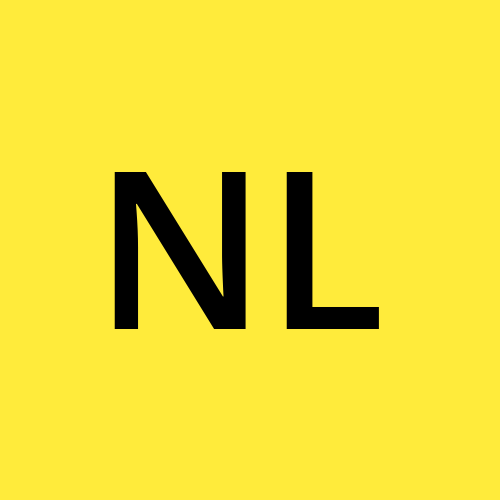NextJS에서 캘린더 컴포넌트 개발하기
 Nowon Lee
Nowon Lee요구사항
캘린더 컴포넌트를 개발하게 된 계기는 다음과 같다.
공개된 라이브러리는 프로젝트에 맞게 UI를 변경하기 까다롭다.
서버 사이드 렌더링 프레임워크의 경우 렌더링에서 에러가 발생하는 경우가 종종 있다.
라이브러리마다 지원하는 기능의 범위가 다르다.
Next.js 프로젝트를 세팅하고 기본적인 달력 기능을 하는 페이지를 만들어 본 과정을 기록했다.
컴포넌트를 작성하기 전 다음과 같은 작업을 거쳤다.
create-next로 Next.js 프로젝트 생성Tailwind CSS 설치 및 세팅
lucide-react아이콘 라이브러리 설치date-fns날짜 라이브러리 설치
작업
우선 패키지를 하나 설치한다.
npm install @nwleedev/use-calendar
이 패키지에서 불러올 수 있는 useCalendar Hook은 다음과 같은 기능을 제공한다.
Hook에 Date 객체를 전달함으로써 초기 상태를 지정할 수 있다.
현재 상태에 대해서 일 목록, 월 목록, 10년 주기의 연 목록을 가져올 수 있다.
캘린더의 상태를 업데이트할 수 있는 함수가 존재한다.
기본적인 달력 페이지를 작성했다.
캘린더 헤더에서 좌우 화살표를 통해 이전 달, 다음 달로 이동할 수 있다.
헤더 중앙에는 현재 캘린더가 가리키는 연도와 월이 표시된다.
캘린더에는 현재 캘린더의 날짜들만 보이게 된다.
사용자가 클릭한 날짜는 검은색 원으로 표시된다.
"use client";
import useCalendar, { DateLibs } from "@nwleedev/use-calendar";
import { format } from "date-fns";
import { ChevronLeft, ChevronRight } from "lucide-react";
import { useState } from "react";
const Calendar = () => {
const [selectedDate, setSelectedDate] = useState(new Date());
const { days, date, onMonthChange } = useCalendar({
defaultValue: selectedDate,
});
const month = date.getMonth();
return (
<div className="w-full h-full gap-y-4 flex flex-col justify-center items-center">
<div className="w-full h-10 flex justify-center items-center gap-x-2">
<button onClick={() => onMonthChange(month - 1)}>
<ChevronLeft />
</button>
<h2 className="text-xl font-semibold">{format(date, "MMM, yyyy")}</h2>
<button onClick={() => onMonthChange(month + 1)}>
<ChevronRight />
</button>
</div>
<div className="grid grid-cols-7 gap-y-1 gap-x-2">
{days.map((day) => {
const classNames = getClassNames(date, day, selectedDate);
if (!classNames) {
return <div key={day.getTime()} className="w-10 h-10" />;
}
return (
<button
key={day.getTime()}
className={classNames?.div}
onClick={() => setSelectedDate(day)}
>
<span className={classNames?.span}>{day.getDate()}</span>
</button>
);
})}
</div>
</div>
);
};
const getClassNames = (date: Date, day: Date, selectedDate: Date) => {
if (!DateLibs.isMonthEqual(date, day)) {
return;
}
if (
DateLibs.isYearEqual(day, selectedDate) &&
DateLibs.isMonthEqual(day, selectedDate) &&
DateLibs.isDateEqual(day, selectedDate)
) {
return {
div: "flex justify-center items-center w-10 h-10 rounded-full bg-black",
span: "text-white",
};
}
if (day.getDay() === 0) {
return {
div: "flex justify-center items-center w-10 h-10",
span: "text-red-500",
};
}
if (day.getDay() === 6) {
return {
div: "flex justify-center items-center w-10 h-10",
span: "text-blue-600",
};
}
return {
div: "flex justify-center items-center w-10 h-10",
span: "text-gray-700",
};
};
export default Calendar;
기초적인 캘린더에서 다음과 같은 기능을 추가할 수 있다.
헤더 중앙을 클릭하면 현재 연도에 대해서 달을 선택할 수 있는 화면으로 전환되어야 한다.
월 목록 화면에서 헤더 좌우 화살표를 클릭하면 이전 연도, 다음 연도로 이동할 수 있다.
각 월을 클릭하면 캘린더에는 현재 연도 & 클릭한 월에 해당하는 날짜 목록이 보여지게 된다.
캘린더의 상태는
stage로 관리할 수 있다. 스테이지 값에 따라서 날짜 목록을 표시할지 월 목록을 표시할지 결정된다.
"use client";
import useCalendar, { CalendarStage, DateLibs } from "@nwleedev/use-calendar";
import { format } from "date-fns";
import { ChevronLeft, ChevronRight } from "lucide-react";
import { useState } from "react";
const Calendar = () => {
const [selectedDate, setSelectedDate] = useState(new Date());
const {
days,
date,
months,
stage,
onMonthChange,
onYearChange,
onStageChange,
} = useCalendar({
defaultValue: selectedDate,
});
const month = date.getMonth();
const year = date.getFullYear();
return (
<div className="w-full h-full gap-y-4 flex flex-col justify-center items-center">
{stage === CalendarStage.DAYS && (
<div className="w-full h-10 flex justify-center items-center gap-x-2">
<button onClick={() => onMonthChange(month - 1)}>
<ChevronLeft />
</button>
<h2
className="text-xl font-semibold"
role="button"
onClick={() => {
onStageChange(CalendarStage.MONTHS);
}}
>
{format(date, "MMM, yyyy")}
</h2>
<button onClick={() => onMonthChange(month + 1)}>
<ChevronRight />
</button>
</div>
)}
{stage === CalendarStage.DAYS && (
<div className="grid grid-cols-7 gap-y-1 gap-x-2">
{days.map((day) => {
const classNames = getClassNames(date, day, selectedDate);
if (!classNames) {
return <div key={day.getTime()} className="w-10 h-10" />;
}
return (
<button
key={day.getTime()}
className={classNames?.div}
onClick={() => setSelectedDate(day)}
>
<span className={classNames?.span}>{day.getDate()}</span>
</button>
);
})}
</div>
)}
{stage === CalendarStage.MONTHS && (
<div className="w-full h-10 flex justify-center items-center gap-x-2">
<button onClick={() => onYearChange(year - 1)}>
<ChevronLeft />
</button>
<h2 className="text-xl font-semibold">{format(date, "yyyy")}</h2>
<button onClick={() => onYearChange(year + 1)}>
<ChevronRight />
</button>
</div>
)}
{stage === CalendarStage.MONTHS && (
<div className="grid grid-cols-3 gap-y-1 gap-x-2 w-full max-w-[320px]">
{months.map((month) => {
return (
<button
key={month.getTime()}
className="h-10"
onClick={() => {
onMonthChange(month.getMonth());
onStageChange(CalendarStage.DAYS);
}}
>
<span>{format(month, "MMMM")}</span>
</button>
);
})}
</div>
)}
</div>
);
};
const getClassNames = (date: Date, day: Date, selectedDate: Date) => {
// 이전 코드의 함수와 같음
};
export default Calendar;
월간 날짜 목록만 아니라 주간 날짜 목록을 표시하는 데에도 useCalendar Hook을 도입할 수 있다.
- 헤더에서 좌우 버튼을 클릭하면 이전 주간, 다음 주간으로 달력이 업데이트된다.
"use client";
import useCalendar, { DateLibs } from "@nwleedev/use-calendar";
import { format, getWeek } from "date-fns";
import { ChevronLeft, ChevronRight } from "lucide-react";
import { useState } from "react";
const Calendar = () => {
const [selectedDate, setSelectedDate] = useState(new Date());
const { date, week, onWeekChange } = useCalendar({
defaultValue: selectedDate,
});
return (
<div className="w-full h-full gap-y-4 flex flex-col justify-center items-center">
<div className="w-full h-10 flex justify-center items-center gap-x-2">
<button onClick={() => onWeekChange(getWeek(date) - 1)}>
<ChevronLeft />
</button>
<h2 className="text-xl font-semibold">{format(date, "MMM, yyyy")}</h2>
<button onClick={() => onWeekChange(getWeek(date) + 1)}>
<ChevronRight />
</button>
</div>
<div className="grid grid-cols-7 gap-x-2">
{week.map((day) => {
const classNames = getClassNames(day, selectedDate);
return (
<button
className={classNames?.div}
key={day.getTime()}
onClick={() => {
setSelectedDate(day);
}}
>
<span className={classNames?.span}>{format(day, "dd")}</span>
</button>
);
})}
</div>
</div>
);
};
const getClassNames = (day: Date, selectedDate: Date) => {
if (
DateLibs.isYearEqual(day, selectedDate) &&
DateLibs.isMonthEqual(day, selectedDate) &&
DateLibs.isDateEqual(day, selectedDate)
) {
return {
div: "flex justify-center items-center w-10 h-10 rounded-full bg-black",
span: "text-white",
};
}
if (day.getDay() === 0) {
return {
div: "flex justify-center items-center w-10 h-10",
span: "text-red-500",
};
}
if (day.getDay() === 6) {
return {
div: "flex justify-center items-center w-10 h-10",
span: "text-blue-600",
};
}
return {
div: "flex justify-center items-center w-10 h-10",
span: "text-gray-700",
};
};
export default Calendar;
이렇게 useCalendar 훅을 통해서 유연한 캘린더 컴포넌트를 작성할 수 있다.
패키지
useCalendar 훅은 다음 패키지를 설치하면 사용할 수 있다.
Subscribe to my newsletter
Read articles from Nowon Lee directly inside your inbox. Subscribe to the newsletter, and don't miss out.
Written by
